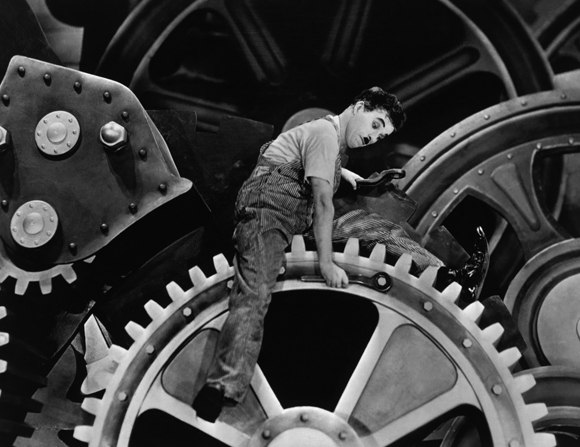Deathwatch (2002) This British-German co-production from director Michael J. Bassett is set during World War I, and combines the gritty realism of warfare with a more surrealistic tone. A company of British soldiers becomes stuck behind enemy lines, in a muddy German trench. They are separated from their regiment, and begin to witness strange phenomena that suggest bad omens for the wayward soldiers. Bassett is never explicitly clear about whether or not the ghostly phenomena are purely psychological in nature or due in part to a supernatural cause. Most of the action is obscured by fog, concealing many of the low-budget limitations of the film. Although Deathwatch doesn’t skimp on the atmosphere, it could have been much better. Many of the characters are poorly developed, with minimal traits to distinguish one from another. Instead, there are numerous scenes where they are bickering, but little is said. Andy Serkis stands out in an underwritten role as a sadistic soldier who appears to follow his own code, but almost seems to exist in his own movie, which isn’t necessarily a good thing. There is an underlying theme that the true enemy is within us all, as foretold in a haunting prophesy by a captured German soldier. Faults aside, it might still warrant a viewing for the ambiguous thematic elements. Just don’t expect too much.
Rating: ***. Available on DVD and Netflix Streaming.
The Legend of the 7 Golden Vampires (1979) Hey, do you like Hong Kong action movies? How about Hammer horror? This Hammer/Shaw Brothers co-production combines two great things: kung fu and vampires. It’s a mixture not entirely unknown in the East, but a first for Hammer. Peter Cushing once again reprises his role as Dr. Van Helsing, who suddenly finds himself in Hong Kong, continuing his crusade against the scourge of vampirism. Cushing brings the usual authority and class to his role, although at this point he could have played Van Helsing in his sleep. He unites with Hsi Ching, his brothers, and knife-wielding sister on an expedition to find and destroy the titular vampires. It doesn’t make a whole lot of sense with its uneasy mix of Eastern and Western lore, but the original approach ensures that things stay interesting. Not Hammer’s (or the Shaw Brothers’) best hour, but definitely worth a look.
Rating: *** ½. Available on DVD.
Cronos (1993) Writer/Director Guillermo Del Toro’s first feature film embodies the age-old Faustian theme of eternal life at a terrible price. The Cronos Device, created by a 16th century alchemist, is a golden scarab beetle-shaped mechanism with life prolonging properties, but diabolical consequences. The device eventually ends up in an elderly antique dealer’s shop, and the shopkeeper soon falls under its addictive influence, unable to control it or its effects. Meanwhile, a wealthy dying man possesses the equivalent of the device’s ancient owner’s manual, and strives to obtain the device for his own purposes. His sadistic nephew/caretaker (played by future Hellboy Ron Perlman) employs any means necessary to bring it back. Cronos has many of the themes that Del Toro would continue to explore and refine in subsequent films, such as his fascination with mechanical devices, a merging of the mystical and mundane, and the eternal struggles between the profane and the sacrosanct. It’s never really made clear how the device works, and Cronos lacks the depth of Del Toro’s best films, but the gothic tone and creepy visuals are suitably compelling. Cronos established Del Toro as a force to be reckoned with, and stood as a preview of the great things to come from a remarkably talented filmmaker.
Rating: *** ½. Available on DVD, Blu-Ray and Netflix Streaming.
Shock Waves (1977) What if the cast of Gilligan’s Island had to contend with a horde of unstoppable Nazi zombie soldiers? In this shoestring-budgeted horror film, a misfit bunch of tourists become stranded on a deserted island after their charter boat, run by an obstinate captain played by John Carradine, runs aground. They’re forced to find help as they discover the island’s sole inhabitant, played by Peter Cushing. Cushing phones in his performance as an elderly SS commander, who is now living in self-imposed exile at a decaying resort. We soon learn that he was involved with an experiment to create super soldiers during the waning days of World War II. The half dead/half alive soldiers were created to fight in any climate and could kill with their bare hands, but could not be adequately controlled. At the end of the war, a shipload of the soldiers was dispatched to the Caribbean to await orders that never came, and subsequently sank. There is an unusual storm at the beginning of the film, which somehow causes the shipwreck to rise to the surface, unleashing the undead super soldiers from their watery imprisonment. There’s a little too much screaming at one another and not as much character development as I’d like, but it’s certainly diverting enough, and the imagery of the soldiers rising out of the water to pursue their frightened quarry is adequately creepy. For a zombie film the violence is fairly mild. Outside of the mild profanity and bad 70s haircuts, there’s nothing here that would have been out of place in a 50s Roger Corman flick. Recommended!
Rating: ***. Available on DVD and Netflix Streaming.
















